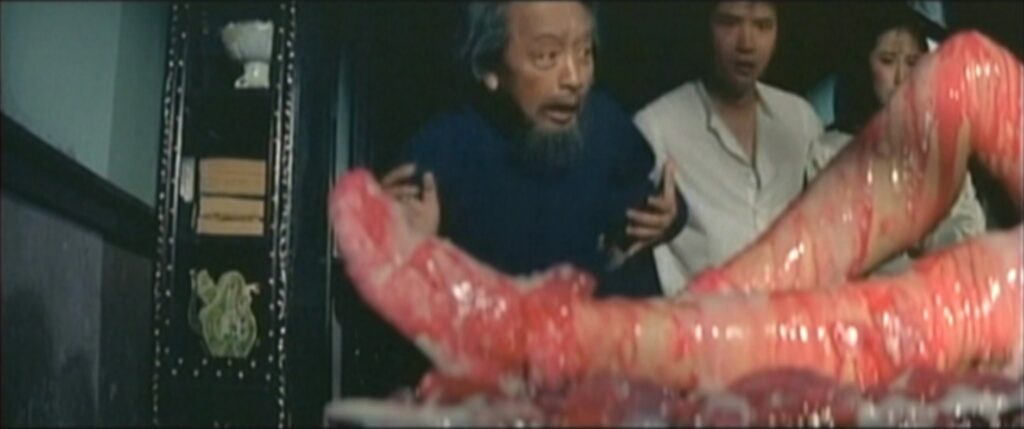
Kuei Chih-Hung’s Curse Of Evil (1982) plays as the Chinese equivalent to Gothic Horror. The film is set entirely in a spooky old mansion; there’s the ominous “curse of the bloody frog”; a man masquerades as a monster in order to procure an inheritance; all are hallmarks of Gothic era fiction. And Kuei Chih-Hung embraces the aesthetic with moody lighting and jump scares.
But Curse Of Evil, a low budget Shaw Brothers production, often looks campy as well. Rubber suits and killer hand puppets make Curse Of Evil a film in the vein of William Castle. Moments of sexual violence and gore are abruptly followed by silly deaths, cheap props, and narrative non sequiturs. Curse Of Evil is Gothic horror as only Kuei Chih-Hung could have done it.
Beyond these superficial joys is a deeper meaning; a meditation on the nature of generational trauma and class strife. Curse Of Evil is a film that looks at how greed, wealth and power ultimately corrupt and destroy. In Kuei Chih-Hung’s hands the sins of the father (or in this case the grandfather) are revisited upon the sons and daughters.
The themes of Curse Of Evil are never diluted by the madcap spectacles the inventive Kuei Chih-Hung has conjured. Theme and spectacle work on parallel tracks that, each in their turn, dominate the film. In this way Curse Of Evil is one of Kuei’s more coherent genre exercises.
